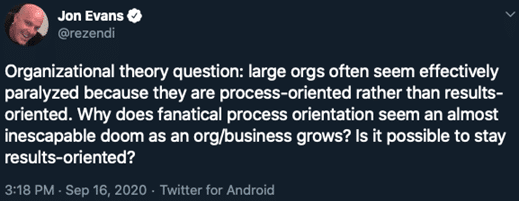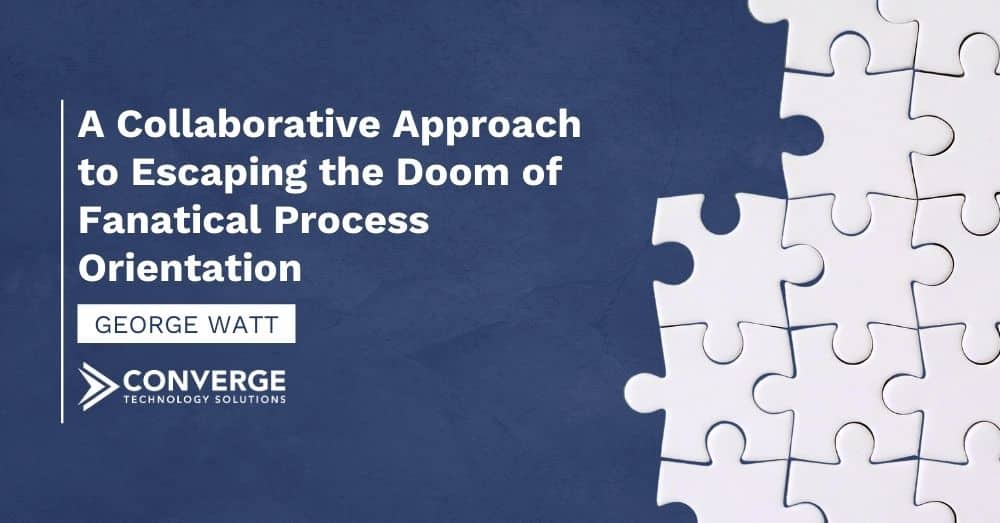“Why does fanatical process orientation seem an almost inescapable doom as an org/business grows? Is it possible to stay results-oriented?”

This great question is not simply a perception based upon momentary frustration. It’s a window into a potential anti-pattern with a significant impact.
In our book, “Lean Entrepreneurship”, we describe a study of innovation in established organizations that discovered “heavyweight processes and process pageantry” was one of the most common causes of innovation failure. New, breakthrough ideas become crushed under the weight of processes and procedures designed for large, mature lines of business. In some cases, teams expend more effort adhering to processes than working on their idea. Even for teams who manage to deal with this, the processes are often soul crushing.
A large crater
The impact can be far broader than you might imagine, extending well beyond the borders of your own organization. A startup we once worked with informed us that their marketing strategy was in jeopardy. The specialized marketing company they engaged informed them that there were as many people from the startup’s parent company “red lining” their contract as the marketing company had employees, and they could not afford to continue.
Why?
How does this happen? There are many reasons. In the above example, it was a case of fatal management error 5, managing everyone the same way. A process designed for large, multi-million-dollar contracts was being applied to contracts in the hundreds, or a couple of thousand, dollars. It was not commensurate with the risk being managed. The process itself likely cost more than the purchase.
We also found groups of people whose sole responsibility was to manage certain processes. That alone is not necessarily bad, though often they were unaware of a specific team’s objectives, scale, or scope. Their success was measured by step completion, strict adherence to process, or rejection when steps were not complete. Not by outcomes. The process was their objective. Though, rather than explore the many other causes of process myopia – too many to enumerate here – there may be good news in exploring why it often persists.
Question everything
More often than you might expect, we found that the root cause of persistent process hypnosis was simply that nobody had asked whether things had to be that way. This should be great news. Though, if that is the case, why did bad processes persist?
Engage don’t enrage
We learned that, when processes were questioned, the predominant style was adversarial, and sometimes offensive. It could frequently be characterized as a passionate rant that listed the many ways in which those creating the processes were incompetent, how they didn’t understand their domain (e.g.: procurement, hiring), and how no sane person could ever develop a process as bad as the one they designed. The speaker often concluded by telling these domain experts how to do their job. It’s not a great way to start a relationship.
We found that approaching these same experts with the phrase “I need your help”, followed by (to Jon’s point) a description of the outcomes and objectives we were trying to achieve, was a much better path to success. “Hey, you’re the experts. Can you think of a way we can…?” The domain experts usually enjoyed the challenge, took ownership of the puzzle, and created solutions that were much better, and way more robust than we ever could have.
I realize I have just scratched the surface. We cover this in greater detail in the book, though the good news is that it is absolutely possible to drive organizational focus toward outcomes. Removing process obstacles in this way was a big part of our team’s value.




